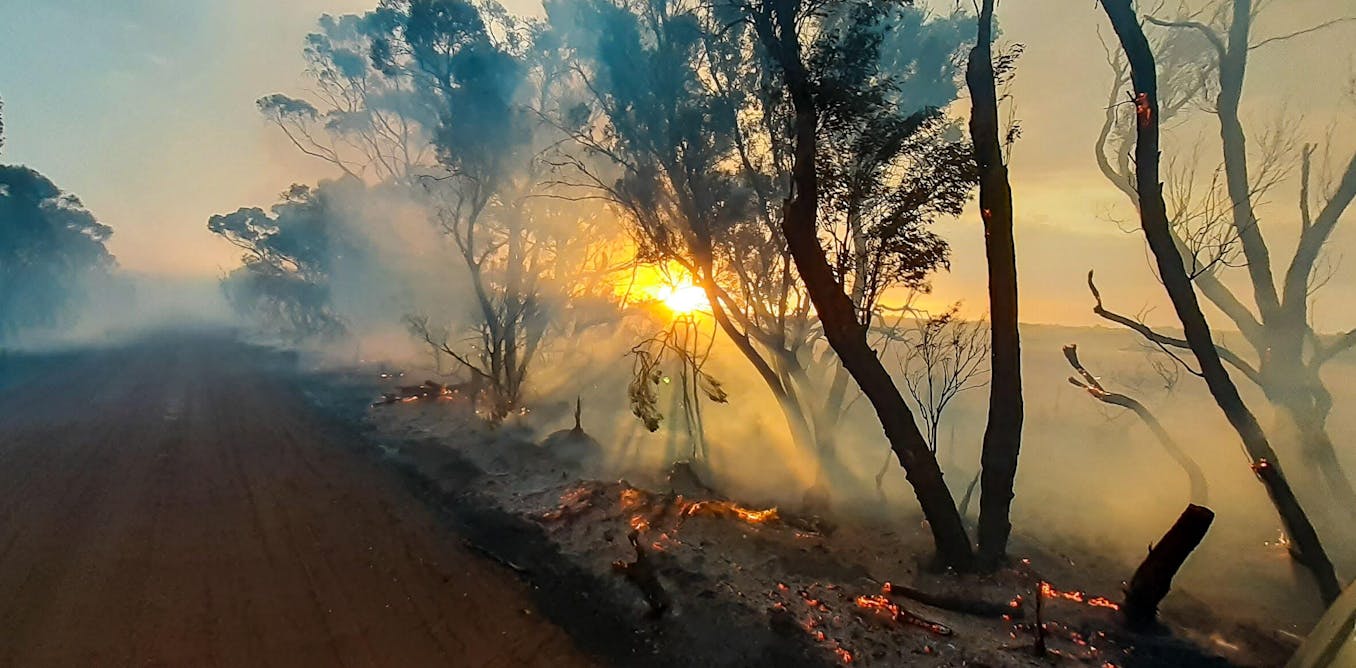The Relevance of Bushfire Monitoring in Fire Protection
In the world of fire defense, the value of efficient bushfire monitoring can not be downplayed. As neighborhoods worldwide come to grips with boosting instances of wildfires, the positive strategy to preventing and mitigating these natural catastrophes with calculated bushfire administration methods has become an essential aspect. Past the instant threat to human life and residential or commercial property, the interplay in between bushfire monitoring and environmental preservation, area involvement, and environment adjustment positions intricate difficulties that demand detailed solutions.
Importance of Proactive Bushfire Prevention
Positive bushfire avoidance approaches are important in reducing the ruining impacts of wildfires on neighborhoods and ecosystems. One crucial aspect of proactive bushfire prevention is fuel monitoring.
Additionally, producing firebreaks - gotten rid of areas where plant life is tactically eliminated to develop an obstacle to reduce or quit the progression of a bushfire - is an additional important aggressive action. By applying these strategies, the spread of wildfires can be limited, safeguarding both human lives and the atmosphere. Moreover, informing the public ablaze security methods and advertising neighborhood understanding concerning the significance of bushfire prevention are vital components of aggressive approaches. Eventually, positive bushfire prevention plays a considerable role in safeguarding communities and communities from the damaging impacts of wildfires.
Role of Area Interaction in Fire Protection
Engaging the area in fire protection initiatives is essential to boosting the performance of positive bushfire avoidance approaches. Community involvement plays a crucial duty in fostering a cumulative understanding of the risks postured by bushfires and the value of preparedness actions. By involving neighborhood residents, authorities can distribute essential information on fire safety and security practices, emptying procedures, and early caution systems, encouraging individuals to take positive steps to guard their buildings and lives.
By cultivating a culture of preparedness and collaboration, areas can reinforce their ability to respond efficiently to bushfire emergencies, lessening the influence on lives and residential or commercial properties. Inevitably, area interaction is a cornerstone of extensive fire defense strategies, stressing the relevance of cumulative action in guarding prone areas from the hazard of bushfires.
Value of Wildlife Conservation in Bushfire Administration
Preservation of wild animals plays an important role in efficient bushfire management approaches, making certain the defense of varied ecological communities and biodiversity in fire-prone regions. Wild animals preservation is essential as it adds to the general strength of communities, assisting in their capability to recover and stand up to from the impact of bushfires. By saving environments and securing numerous species, the natural equilibrium within these ecological communities is kept, which is necessary for their long-lasting wellness and sustainability.
Moreover, wild animals preservation also aids in decreasing the threat and intensity of bushfires. Healthy and balanced ecosystems with unspoiled wildlife populaces can act as natural firebreaks, reducing the spread of fires and restricting their damaging capacity (BAL Report). Specific pet varieties, like burrowing pets or birds that spread out seeds, play unique roles in assisting or preventing fires in the post-fire regeneration of habitats
Including wild animals conservation right into bushfire management approaches is not just important for guarding biodiversity however also for promoting the total wellness and resilience of environments in the face of increasing fire risks.
Advantages of Strategic Fuel Decrease Programs
Tactically executing fuel decrease programs is necessary in alleviating the risk and impact of bushfires in fire-prone regions. These programs involve controlled burning, mechanical clearing, and various other methods to lower the quantity of combustible greenery readily available to sustain wildfires. By strategically reducing fuel tons in essential areas, such as close to property communities or visit this site right here essential facilities, the intensity and spread of bushfires can be significantly lowered.
One of the main advantages of gas reduction programs is the enhancement of overall fire resilience in an ecosystem. By creating calculated gas breaks and decreasing the continuity of vegetation, these programs assist to disrupt the course of a bushfire, making it simpler for firemens to extinguish the blaze and include. Additionally, gas reduction programs can protect biodiversity by stopping excessively intense fires that can ruin habitats and intimidate wild animals populaces.
Moreover, these programs can likewise protect human lives and residential property by reducing the danger of tragic fires that posture a substantial risk to communities. Ultimately, tactical gas decrease programs play a critical duty in proactive bushfire administration and fostering a more secure atmosphere for both people and nature.
Impact of Environment Adjustment on Bushfire Danger

Higher temperature levels result in drier plant life, making it much more susceptible to ignition. Lowered rainfall in specific areas lengthens drought conditions, further raising the flammability of the landscape. Furthermore, the changing climate has changed wind patterns and weather, bring about more irregular fire behavior and fast fire spread.
As the environment remains to change, the frequency and strength of bushfires are anticipated to climb, necessitating a aggressive and adaptive method to bushfire administration. Approaches need to evolve to account for the altering risk landscape, integrating environment estimates and thinking about long-lasting strength in fire administration preparation. Addressing the effect of climate modification on bushfire threat is essential in creating reliable strategies to protect lives, property, and the environment.
Final Thought
Finally, proactive bushfire avoidance, community interaction, wildlife conservation, tactical fuel reduction programs, and consideration of climate change are important parts in reliable fire defense. By carrying out these approaches, we can much better take care of bushfire threats and protect both human lives and the setting. BAL Assessment. It is crucial that stakeholders collaborate to prioritize these measures to decrease the devastating influence of bushfires on areas and communities

As the climate continues to change, the frequency and intensity of bushfires are anticipated to climb, requiring a aggressive and adaptive approach to bushfire administration.In conclusion, proactive bushfire avoidance, neighborhood interaction, wildlife my review here conservation, strategic gas decrease programs, and factor to consider of climate change are critical components in effective fire security.